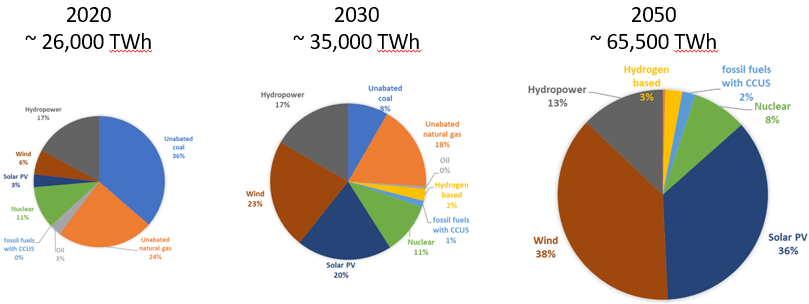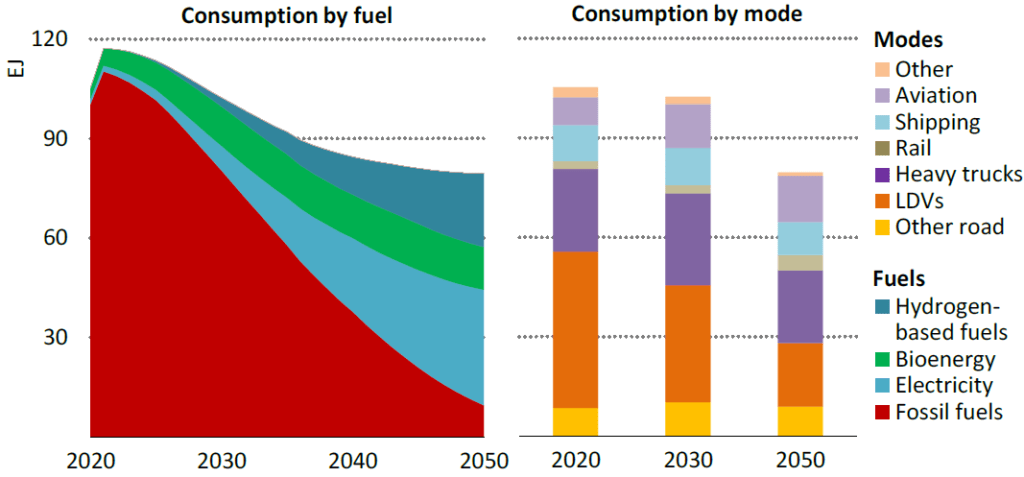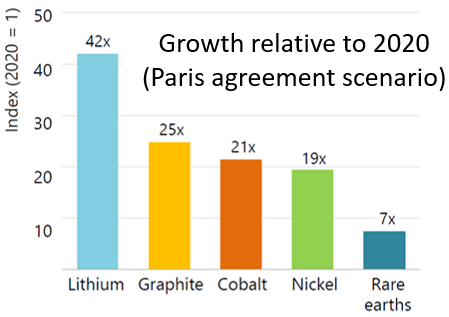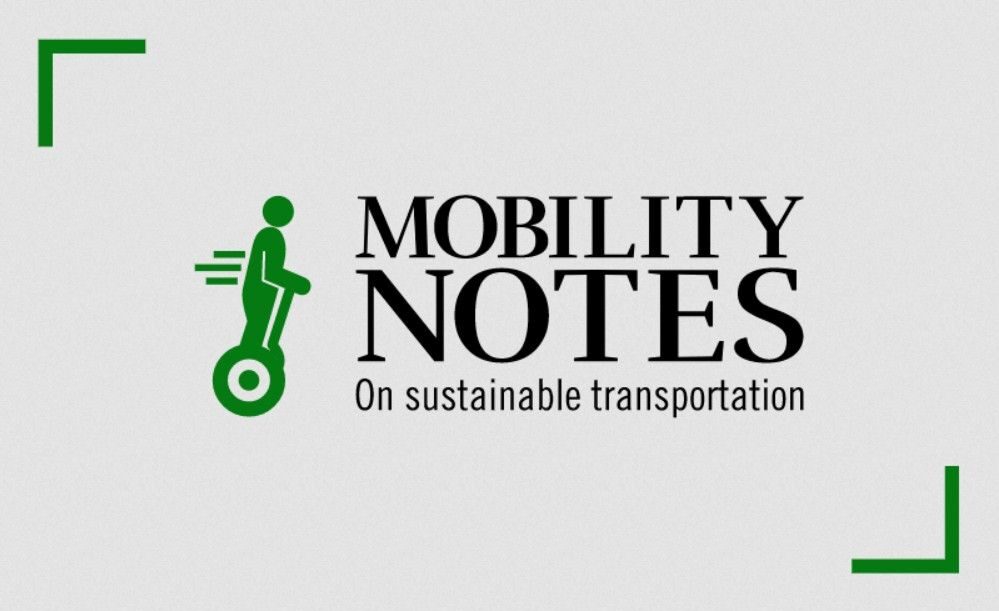Roadmap for net zero GHG by 2050 - Summary of the IEA analysis
GHG = Greenhouse gas, IEA = International Energy Agency
Background
The IEA has published a comprehensive analysis of the steps that need to be taken to reach net zero GHG emissions by 2050. This is a summary relevant to the transportation sector. By 2050, the world population would have increased by another 2 billion people, and a significant shift to renewables would be required to offset the increase in energy demand. The report warns that current commitments fall short and by the year 2100, temperatures will rise by 2.1 degrees Celsius. Here are some measures that are recommended in this report.

Energy
Fossil Fuels
- To meet today energy demand, share of fossil fuels fall reduces from ~ 80% today to slightly over 20% by 2050.
- No new oil and gas fields and coal mines
- By 2050, gas demand declines by 55% and oil declines by 75% from ~ 90 million barrels per day in 2020 to 24 mbpd.
- In the above scenario, tax revenue from oil and gas sales falls by about 40% between 2020 and 2030.
Electricity
- Total electricity generation increases by 2.5X by 2050 and accounts for almost half of total energy consumption.
- 90% of electricity needs to be renewable. By 2050, wind and solar PV together account for nearly 70%.
- Solar is projected to be the largest source, at 20% of total energy supply. Solar PV capacity increases by 20X by 2050, reaching annual additions of 630 GW by 2030. This is equivalent to installing the world’s current largest solar park roughly every day. Wind capacity increases 11X by 2050.
- Annual investment in transmission and distribution needs to increase > 3X, from $260B today to $820B in 2030.
Total annual energy investment will have to increase to $5 trillion by 2030, adding 0.4% a year to annual global GDP growth.

Transportation

Sales of new internal combustion engine cars must end by 2035. All cars on road globally should be fully electric or fuel cell by 2050.
Electric vehicles (EVs)
Growth:
3 million or 5% of global car sales in 2020 to > 60% or 56 million by 2030.
Infrastructure:
The number of public charging points needs to increase from ~ 1 million today to 40 million in 2030.
Batteries:
160 gigawatt-hours (GWh) today to 6,600 GWh in 2030. This is the equivalent of adding ~ 20 gigafactories each year for the next ten years.
Aviation and shipping:
Biofuels and synthetic fuels can play a role in decarbonizing aviation, while ammonia can do the same for shipping.
What about biking and public transportation ?
It is estimated that the above changes associated with consumer choice – purchasing an EV or retrofitting a house with energy-efficiency technologies accounts for a little over half of the total emissions reductions. Behavioral changes such as replacing car trips with walking, cycling or public transport, or foregoing a long-haul flight only provide ~4% of the emissions reductions.
Impact on air quality and jobs
Air Quality impact
In 2030, improved air quality can result in 2 million fewer premature deaths associated with air pollution.
Jobs impact
- 14 million new jobs could be created by 2030 associated with investments in clean energy.
- 16 million additional jobs associated with efficient appliances, electric and fuel cell vehicles.
- 5 million jobs associated with fossil fuels are lost.
Minerals
In another report, the IEA has assessed the mineral demands from clean energy technologies (EVs, batteries, clean electricity generation and distribution) to meet the climate goals. Compared to 2020, the demand for minerals is expected to be 4X – 6X by 2040 to meet the Paris Agreement (T rise < 2 °C) or net zero emissions by 2050. The demand for nickel and lithium increases by 19X and 42X, respectively by 2040 for the Paris targets (even higher for net zero by 2050).

Other recent posts
Conference Summary – Hydrogen for Sustainable Mobility Forum
![]()
A summary of the “Hydrogen for Sustainable Mobility Forum” conference held in Turin.
Cummins new engines introduced and poised to meet MY2027 standards
![]()
A round-up of the recently announced engines which will meet the upcoming EPA MY 2027 standards.
Biodiesel and Renewable diesel production in the US hits a speedbump
![]()
Biodiesel and renewable diesel production in the U.S. has slowed down significantly in 2025. Here’s why.
Like it ? Share it !

